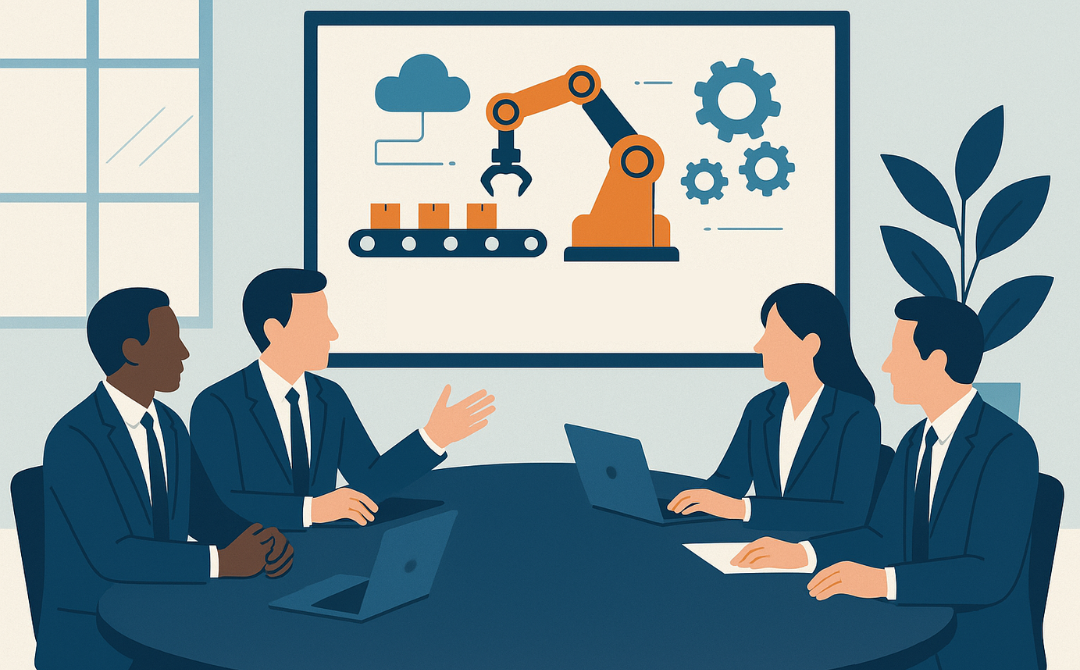
Why CXOs Are Betting Big on Automation in 2025?
In 2025, automation is no longer a side project tucked away in IT departments, it has become a boardroom priority. Across industries, CXOs are making decisive bets on automation as the backbone of enterprise-wide transformation. From streamlining operations and cutting costs to enabling faster decision-making and unlocking innovation, automation is redefining how modern enterprises function.
In 2025, automation is no longer a side project tucked away in IT departments, it has become a boardroom priority. Across industries, CXOs are making decisive bets on automation as the backbone of enterprise-wide transformation. From streamlining operations and cutting costs to enabling faster decision-making and unlocking innovation, automation is redefining how modern enterprises function.
But why now, and why are leaders across the C-suite aligning their strategies around it? Let’s explore.
Automation Moves Beyond Efficiency
For years, automation was seen as a tool to improve efficiency, automating routine tasks, reducing human error, and cutting operational costs. Today, the conversation has shifted. Enterprises are looking at automation not just as a cost-saving lever but as a strategic enabler of growth and resilience.
According to Deloitte’s 2024 Global Shared Services Survey, over 74% of enterprises have scaled intelligent automation initiatives across multiple functions, far beyond IT. The value isn’t just in doing things faster, but in building business models that are agile, data-driven, and future-proof.
The Drivers Behind Enterprise-Wide Automation
1. Unprecedented Pressure on Agility
In today’s volatile market, businesses need to pivot faster than ever. Whether it’s supply chain disruptions, evolving customer expectations, or regulatory shifts, agility is everything. Automation enables enterprises to reconfigure processes at speed, something manual systems simply can’t match.
2. The Talent Equation
The global talent shortage in tech and operations continues to widen. A Korn Ferry study estimates a deficit of 85 million skilled workers by 2030, potentially costing $8.5 trillion in unrealized revenues. Automation fills the gap by reducing dependency on repetitive labour, allowing scarce talent to focus on higher-value, innovation-driven work.
3. Data Explosion Meets AI
Every enterprise is now sitting on mountains of data. The challenge isn’t access, it’s actionability. Intelligent automation, powered by AI and machine learning, enables organizations to turn data into real-time insights and automated decisions, giving CXOs a competitive edge.
4. Risk and Compliance Demands
As regulatory landscapes evolve (from GDPR to ESG disclosures), manual compliance processes are becoming unsustainable. Automation standardizes governance, reduces risks, and ensures enterprises stay compliant without slowing down business operations.
The OEMs Powering the Automation Wave
Several technology leaders have emerged as the backbone of enterprise automation:
- ServiceNow – Automating IT service management and expanding into enterprise workflows across HR, customer service, and beyond.
- UiPath – A global leader in robotic process automation (RPA), driving hyper automation strategies in finance, supply chain, and back-office operations.
- Automation Anywhere – Building intelligent digital workers that can operate across industries.
- Microsoft Power Automate – Extending low-code automation to business users, making it accessible across the enterprise.
- SAP Signavio & Build Process Automation – Integrating process intelligence with enterprise applications.
- IBM Watson Orchestrate – Blending AI with automation for smarter workflows.
These OEMs are shaping the very ecosystem of enterprise transformation. For CXOs, the question isn’t whether to adopt, but how fast and how deep to integrate automation across their value chain.
Automation Across the Enterprise: Key Impact Zones
Automation today touches every corner of the enterprise:
- Operations & Supply Chain – Real-time inventory visibility, predictive logistics, and seamless vendor management.
- Finance – Automated invoicing, reconciliations, fraud detection, and financial planning.
- Customer Experience – Chatbots, self-service portals, and predictive service models that deliver faster, smarter support.
- HR & Workforce – Automated onboarding, payroll, and workforce analytics that free HR teams for strategic talent initiatives.
- IT & Security – Automated incident resolution, patch management, and cyber threat response at scale.
The impact is cumulative: when these functions operate in sync, the entire enterprise becomes faster, leaner, and more resilient.
From Projects to Platforms
One of the most profound shifts in 2025 is the move from isolated automation projects to enterprise-wide platforms. CXOs now understand that deploying automation in silos only creates fragmented gains. Platforms like ServiceNow, UiPath, and Microsoft are designed to unify processes across the enterprise, ensuring scalability and consistency.
This shift reflects a larger truth: automation is no longer a tactical investment, but a strategic pillar of transformation.
The CXO Perspective: Betting Big, Betting Wide
So why are CXOs aligning so strongly with automation today? Because they see it as the bridge between today’s complexity and tomorrow’s clarity.
- It reduces costs but also creates capacity for growth.
- It standardizes compliance while accelerating innovation.
- It augments talent shortages yet enables human creativity to flourish.
In short, automation aligns business priorities across the boardroom with efficiency, resilience, scalability, and innovation.
The Road Ahead
By 2025 and beyond, enterprises that treat automation as a strategic, enterprise-wide investment will outpace those that still see it as a tactical IT initiative. The winners will be the organizations that integrate automation into their DNA, making it central to how they operate, compete, and grow.
For CXOs, betting big on automation is no longer optional. It is the surest way to future-proof the enterprise in an unpredictable world.